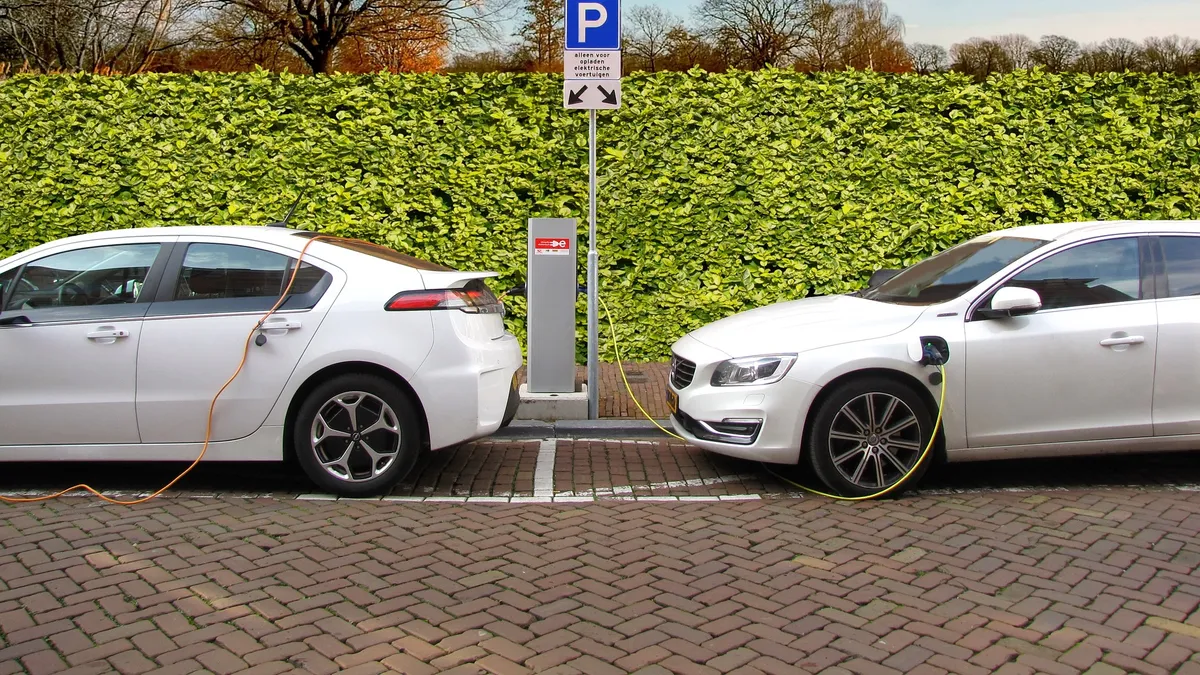Dive Brief:
- Electric vehicles (EVs) can only be harnessed as grid assets if utilities prioritize the customer experience while rolling out new technology and approaches to active charge management, several speakers agreed Tuesday during a virtual Grid Evolution Summit hosted by the Smart Electric Power Alliance (SEPA).
- There are close to 60 utility-managed charging programs around the country, said SEPA principal of transportation electrification Erika Myers, but they utilize a wide range of hardware and software as utilities are "still figuring out what works the best for customers."
- A recent SEPA analysis of filings by U.S. investor-owned utilities, as of April 2020, showed almost $3 billion in transportation electrification investments have been approved or are pending approval by state utility commissions. These electrification filings increasingly focus on medium- and heavy-duty EV charging infrastructure.
Dive Insight:
While the EV market is still relatively new, utilities have already gained significant experience when it comes to passive load control and behavioral management though time-of-use rates, Myers said. There are large opportunities for grid management in shifting to active load control, but utilities must be careful in how the programs are rolled out.
"We should all be laser focused on the customer experience," said Myers. "The ultimate goal of managed charging is to make this as easy and convenient and affordable as possible for customers. People don't buy electric vehicles to be grid assets. They buy them to get from point A to point B and every single time we develop a program we have to keep that in mind."
While COVID-19 has slowed electric vehicle adoption, analysts say the long-term outlook for emissions-free transportation remains strong. EV charging is expected to increase U.S. electricity consumption 11% by 2040, according to SEPA.
Utilities will want to manage that new demand, but customers who find they cannot drive their vehicles because a utility has limited charging will drop out of demand management programs, Myers said. "We have to provide optionality, and give people the ability to opt out of managed charging events," she said.
Electric rates that encourage EV charging at night have been effective in helping move customer charging to off-peak hours, but SEPA research on how to design these rates predicts direct load control will eventually complement time-varying rates and provide dynamic grid services. Direct load control can also help to reduce "timer peaks" on the distribution system, when customers all begin charging when off-peak times begin, the group found.
Managed charging remains nascent, however.
"With active load management, it's still a little in the early stages," said Myers. "There's a lot of demonstration projects around the country ... but there are also many different technologies on both the hardware and software side. We're still figuring out what resonates with customers and which program strategies have the best return on investment for utilities."
Hitesh Soneji, EV specialist and manager of solutions engineering at demand management specialist Olivine, said his company has been working with Sonoma Clean Power and the Clean Power Alliance on managed charging programs, and sees the industry "definitely moving out of the pilot phase."
Olivine manages the Sonoma program and currently has about 800 residents signed up. The Clean Power Alliance is focused on workplace charging for industrial and commercial customers.
"We are slowly building out our asset base to participate in demand response," Soneji said. "We're on the cusp of the transition from pilots to real projects with meaningful capacity."
The relatively modest number of managed charging pilots in place is indicative of the growth in options as well as utilities taking a cautious approach, said Gary Smith, director of programs at load management company Sagewell.
"Utilities are trying a lot of different approaches, and some are waiting to see where the industry goes," said Smith. "It may take a first mover to announce a grand plan for others to fall in line. Overall, there's a lot to learn and a lot of different approaches, and utilities are trying to figure out what will work best for them."
The EV managed charging industry will need to "constantly adapt," Soneji said. "Technology is always a challenge," and companies will eventually need to coalesce around a set of standards that allow for greater interoperability of EV charging hardware and software.
"I'm not too worried about the technology transition," Soneji said.













